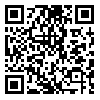Volume 18, Issue 1 (5-2019)
jhosp 2019, 18(1): 89-101 |
Back to browse issues page
Download citation:
BibTeX | RIS | EndNote | Medlars | ProCite | Reference Manager | RefWorks
Send citation to:



BibTeX | RIS | EndNote | Medlars | ProCite | Reference Manager | RefWorks
Send citation to:
Alizadeh Zoeram A, Pooya A, Naji Azimi Z, Vafaee Najar A. Modelling the Dynamics of Human Resources Capacity in Health Care Services
A Case Study of Khatam-al-Anbia Hospital of Mashhad
. jhosp 2019; 18 (1) :89-101
URL: http://jhosp.tums.ac.ir/article-1-6064-en.html
URL: http://jhosp.tums.ac.ir/article-1-6064-en.html
1- PhD. Student in Operational Research Management, Faculty of Economics & Administrative Sciences, Ferdowsi University of Mashhad (FUM), Mashhad, Iran.
2- Associate Professor, Department of Management, Faculty of Economics & Administrative Sciences, Ferdowsi University of Mashhad (FUM), Mashhad, Iran. ,alirezapooya@um.ac.ir
3- Associate Professor, Department of Management, Faculty of Economics & Administrative Sciences, Ferdowsi University of Mashhad (FUM), Mashhad, Iran
4- Professor, Department of Management and Health Economics, Social Determinants of Health Research Center ,School of Public Health, Mashhad University of Medical Sciences (MUM), Mashhad, Iran
2- Associate Professor, Department of Management, Faculty of Economics & Administrative Sciences, Ferdowsi University of Mashhad (FUM), Mashhad, Iran. ,
3- Associate Professor, Department of Management, Faculty of Economics & Administrative Sciences, Ferdowsi University of Mashhad (FUM), Mashhad, Iran
4- Professor, Department of Management and Health Economics, Social Determinants of Health Research Center ,School of Public Health, Mashhad University of Medical Sciences (MUM), Mashhad, Iran
Abstract: (5840 Views)
Background: In service organizations such as hospitals, human resources (HR) play a key role in the quality of service delivery. Lack of a systemic attitude in terms of system dynamics, HR planning have been somewhat distant from reality. In order to solve such a problem, this study aimed to modeling the dynamics of human resources capacity management system in healthcare services.
Materials and Methods: This case study is one of the cases at a clinic of Khatam -al-Anbia Eye Hospital of Mashhad which was used to simulate the system dynamics approach. In the implementation process, after modeling and formulating in Vensim software, the model was validated and appropriate policies were identified based on simulation results.
Results: The simulation results revealed a gap existence between service capacity and desired capacity led to a work pressure. Consequently, time per service relative to the standard time per service (0.333 hours equivalent to 20 minutes) as the core of service quality has been reduced (cutting corners of time). To counteract such a situation, appropriate policies were identified during the time in a dynamic manner using sensitivity analysis based on changing patient acceptance rates and human resource changes.
Conclusion: The proposed model provides the status for hospital managers which allows them to manage appropriate human resources in the same conditions with a viewpoint of causal relationships with respect to system dynamics.
Materials and Methods: This case study is one of the cases at a clinic of Khatam -al-Anbia Eye Hospital of Mashhad which was used to simulate the system dynamics approach. In the implementation process, after modeling and formulating in Vensim software, the model was validated and appropriate policies were identified based on simulation results.
Results: The simulation results revealed a gap existence between service capacity and desired capacity led to a work pressure. Consequently, time per service relative to the standard time per service (0.333 hours equivalent to 20 minutes) as the core of service quality has been reduced (cutting corners of time). To counteract such a situation, appropriate policies were identified during the time in a dynamic manner using sensitivity analysis based on changing patient acceptance rates and human resource changes.
Conclusion: The proposed model provides the status for hospital managers which allows them to manage appropriate human resources in the same conditions with a viewpoint of causal relationships with respect to system dynamics.
Type of Study: Original Article |
Subject:
مدیریت منابع انسانی در بیمارستان
Received: 2018/09/24 | Accepted: 2019/06/4 | Published: 2019/06/21
Received: 2018/09/24 | Accepted: 2019/06/4 | Published: 2019/06/21
Send email to the article author
| Rights and permissions | |
 |
This work is licensed under a Creative Commons Attribution-NonCommercial 4.0 International License. |





